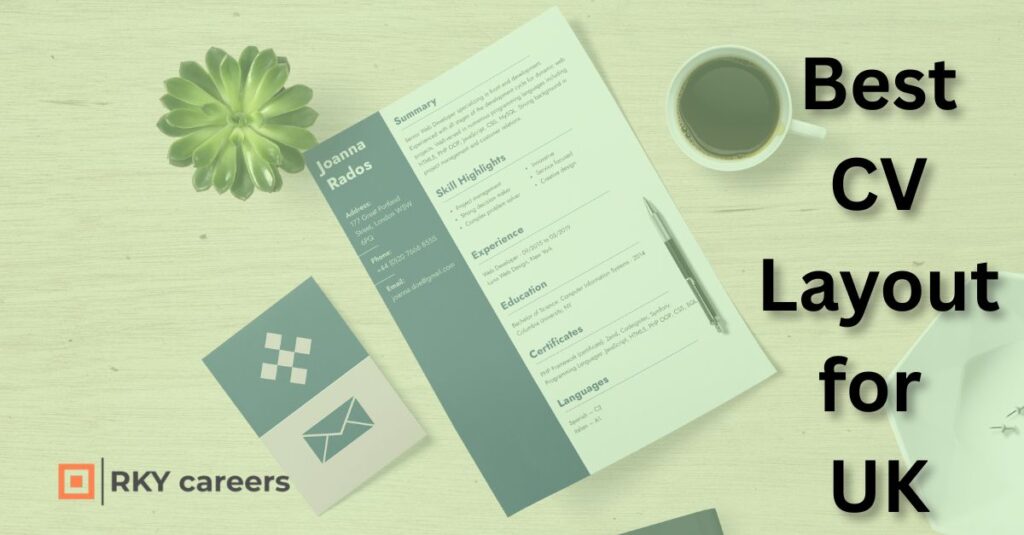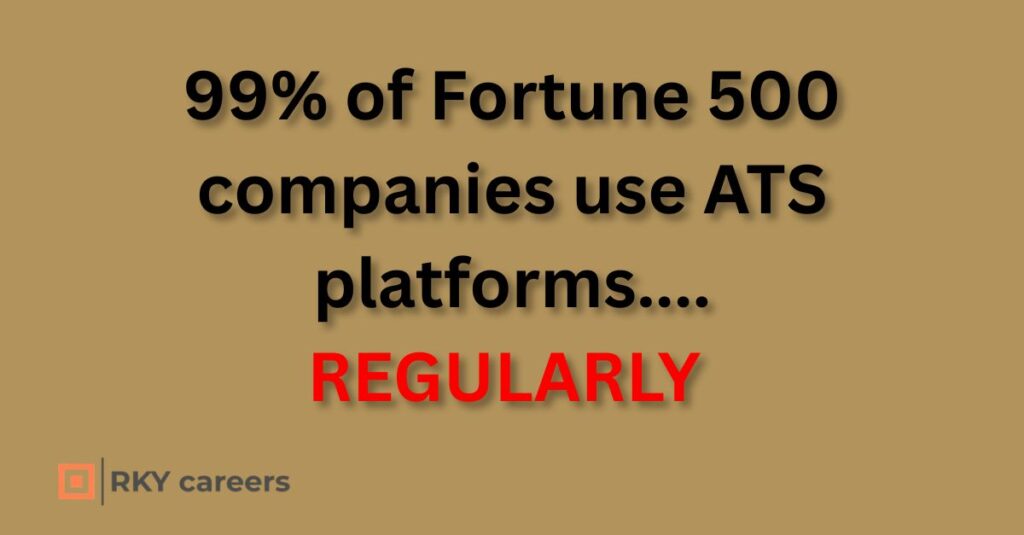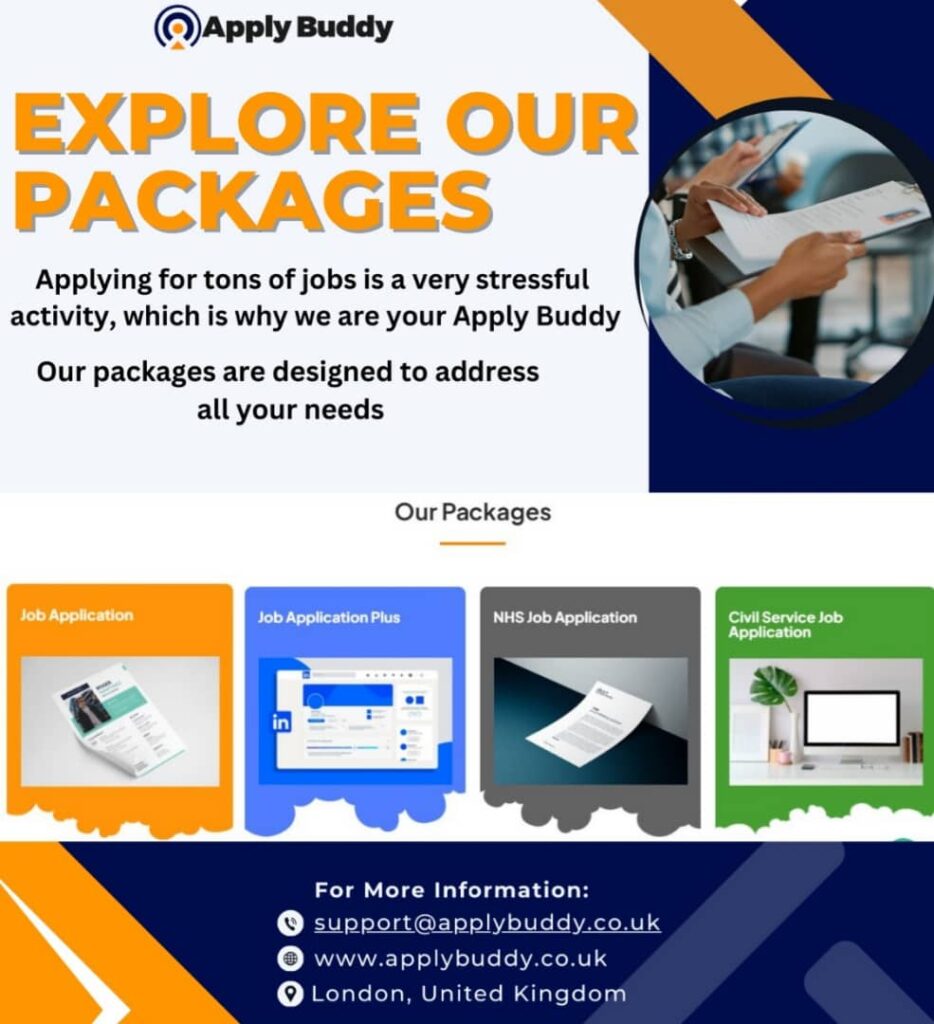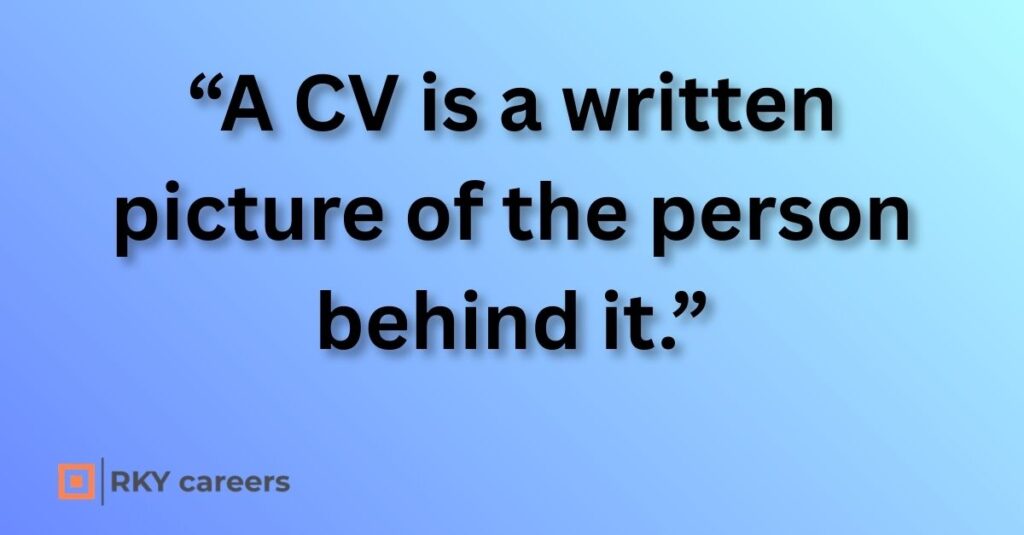Are you still debating the importance of a well crafted CV in 2025 or you’re ready to lay hold on the Best Layout for CV UK to skyrocket your job search.
Crafting the best layout for CV UK is one of the most important steps you can take to stand out in a competitive job market. Consider the fact that recruiters often spend less than ten seconds scanning your CV.
So every detail must work in your favour.
By using the correct format, structure, and design, you can showcase your skills, experience, and achievements. A well-structured CV isn’t just about looking professional. It’s about creating a layout that makes hiring managers stop, read, and remember you.
Stick around, because the right CV layout could be your ticket to landing interviews faster than you think.
Why the Right CV Layout Matters
When it comes to making a strong first impression, the best layout for CV UK can be the deciding factor between landing an interview or being overlooked.
Employers are flooded with hundreds of applications, so your CV needs to stand out instantly. The UK workforce jobs estimate in June 2024 was 37.1 million, up by 1.4 % (503,000) from 2023.
As such, a clear, structured CV makes it easier for recruiters to find your skills, achievements, and experience quickly.
That’s the implication.

The Impact of a Well-Structured CV on Employers
Imagine this: a hiring manager opens your application and, within seconds, your CV tells them who you are, what you’ve achieved, and why you’re perfect for the role.
That’s the power of a well-structured CV. Research shows recruiters spend less than ten seconds scanning a document before making a judgment.
So, what does this mean for you?
If your CV is clean, balanced, keyword-rich, and easy to follow, it creates trust and positions you as a professional. Using a professional CV layout UK makes your information flow logically, helping employers quickly connect your background to their requirements.
Most importantly, a good layout improves readability, boosts your credibility, and increases your chance of securing that all-important interview.
Read also:
Common CV Layout Mistakes to Avoid
Now, let’s talk about the mistakes that can ruin even the strongest application.
- One of the most common mistakes is overcrowding your CV with too much text, making it nearly impossible for recruiters to scan.
- Another error is leaving out essential details like contact information, employment dates, or role descriptions.
- Overly complex designs or flashy graphics may look stylish at first glance, but they often confuse Applicant Tracking Systems.
Bottom line: avoid clutter, keep it simple, and highlight your strengths.
Key Elements of a CV Layout
A successful CV layout is built on five essential elements that highlight your professional identity and career story. These include your personal information, a tailored profile, work experience, education, and your skills and achievements.
Each of these parts plays a role in presenting your suitability for a role. The truth is, without these key elements, even the most stylish CV design won’t impress.
Personal Information and Contact Details
Let’s start with the simplest but most essential element: your personal information. Without it, recruiters can’t contact you, no matter how great your application is.
At a minimum, you should include your name, phone number, and professional email address. Additionally, adding a link to your LinkedIn profile or personal website provides employers with more insight into your career journey.
An effective section should be neat and placed at the top of the CV. And remember: avoid unnecessary personal details such as age, marital status, or a headshot.
Following standard CV design tips UK, you should keep this section concise, relevant, and professional. That way, you set the tone for the rest of your document.
Professional Profile or Personal Statement
Now let’s get to it.
Do you know that the profile or personal statement is the very first narrative recruiters read, and it can make or break your application?
This short paragraph should summarise your career goals, highlight your top skills, and showcase your value in just a few lines.
It gives employers a snapshot of who you are before they dive deeper into your experience. For instance, if you’re applying for a role in finance, you can stress your analytical abilities and track record of improving efficiency.
If you’re targeting creative industries, tailor your wording to reflect innovation and originality.
Using a UK CV template as a guide, you can learn how to make this statement clear and compelling. Note that a powerful profile grabs attention and encourages recruiters to read further.

Read also:
Work Experience and Employment History
Here’s something we can both agree on: your work experience is the heart of your CV. Employers want to see not just what you’ve done, but how your actions made a difference.
The trick is to present your employment history in reverse chronological order, starting with your most recent role. This way, recruiters instantly see your latest and most relevant achievements. But don’t just list tasks.
Instead, highlight responsibilities, skills, and measurable successes, such as “increased sales by 20%” or “reduced project delays by 15%.”
You may wonder why this matters so much. Well, clear evidence of results shows you’re not just experienced, but effective.
And here’s the deal: using a CV format UK 2025 ensures your layout matches current standards, making your employment history both modern and compelling.
That’s how you stand out.
Education and Qualifications
Think about this: your education provides credibility and proof of your knowledge. Employers want to know where you studied, what you achieved, and how it’s relevant to the job.
This section should list your degrees, certifications, and professional qualifications in reverse chronological order. Including industry-relevant certifications like PRINCE2, Agile, or ACCA can elevate your profile significantly.
In creative industries, mentioning software or design-specific qualifications can also boost your chances.
I’ll explain with an example: a marketing applicant with a CIM certification instantly gains credibility. Using a UK CV template can guide you on the best way to format this section so it’s concise yet informative.
Your education demonstrates preparation, knowledge, and commitment, making it a vital part of a successful CV layout.
Skills and Achievements
Now hang on, because this is where you showcase your individuality. The skills and achievements section allows you to demonstrate what sets you apart from other candidates. Instead of vague claims like “good communicator,” back up your skills with evidence.
For instance, “presented monthly reports to senior stakeholders” is more credible than simply saying “excellent presentation skills.” Likewise, highlight achievements that are quantifiable, such as awards, promotions, or exceeding targets.
What’s the big secret I’m talking about? This section proves you’re more than just your job titles; you’re someone who delivers real results.
Including both hard skills and soft skills gives a complete picture. Using CV layout examples from trusted sources will inspire you to balance detail with clarity, ensuring your skills shine through every time.

Apply Buddy is your trusted job application partner.
Guiding you through ATS-friendly CVs, tailored cover letters, and expert career tips.
Let’s help you land your dream interview.
CV Layout Styles to Consider for the UK Job Market
So, what are the different layout styles and templates you can use?
The good news is there isn’t a single correct choice. Instead, the best layout for CV UK depends on your industry, experience, and career goals.
Think about it: a finance professional may prefer a traditional design, while a graphic designer might lean toward something more creative.
Here’s why: matching your layout to the job sector not only impresses recruiters but also reflects your understanding of professional expectations in that field.
Traditional CV Layout
First off, let’s look at the traditional CV layout. This style is timeless for a reason: it’s clean, straightforward, and focuses on the essentials. Employers in sectors like law, finance, and education often prefer this format because it’s easy to read and highly professional.
But what makes it effective?
The clear structure highlights experience, education, and skills without unnecessary distractions. Using a professional CV layout UK helps you present yourself as reliable and detail-oriented.
For example, if you’re applying for a corporate analyst position, recruiters are more interested in your achievements than fancy designs.
The point is, sometimes simple really is best.
The traditional approach may not scream creativity, but it communicates seriousness, consistency, and professionalism. Qualities many employers value above all else.
So, when in doubt, this layout is a safe bet.
Creative CV Layout
Let’s explore the other side of the spectrum. A creative CV layout UK can work wonders if you’re applying for roles in design, marketing, or media.
These industries expect you to showcase originality, so using colour, icons, or innovative formatting can make a real impression.
Imagine a graphic designer applying with a visually stunning CV that demonstrates their design skills before they even step into the interview room.
That said, there’s one small catch: creativity must not come at the expense of clarity.
Recruiters still need to access your experience and qualifications easily. The trick is to balance artistic flair with professional structure.
And here’s why: with the right balance, a creative layout sets you apart while still ticking all the necessary boxes. Done correctly, it proves you can combine style with substance.
Modern CV Layout
Now, let’s move on to the modern CV layout. This option is all about minimalism, readability, and a focus on what matters most: your skills and achievements.
Unlike traditional formats, it relies on clean spacing, bold headings, and subtle design touches.
The result? A sleek, professional document that appeals across industries. Using a modern CV layout UK demonstrates you’re up to date with current job market trends.
Here’s an example: in the tech industry, recruiters often prefer CVs that are concise and structured with clarity. By removing clutter and keeping sections sharp, the modern style ensures your value stands out instantly.
The best part is that it’s versatile enough to work for most professions. Making it one of the safest yet most effective approaches.
Read also:
Tips for Formatting Your CV Layout
Honestly, even the best layout for CV UK won’t shine without proper formatting. That’s where details like font, spacing, and margins come in.
Think about it: would you rather read a crowded page or one that’s neat and inviting? Exactly.
Formatting is the hidden power behind readability, and it ensures recruiters engage with your content. By following proven CV design tips UK, you can make your CV look polished, professional, and accessible to anyone reviewing your application.

Font, Spacing, and Margins
When it comes to crafting a standout CV, presentation matters.
Small formatting choices influence readability, professionalism, and the recruiter’s impression.
- Use a clean and professional font such as Arial or Calibri to ensure your CV appears polished and easy to read.
- Maintain proper spacing between sections and lines to make the document clear, structured, and easy for employers to scan.
- Apply one-inch margins on all sides to keep the layout balanced and prevent overcrowding of text across the page.
- Consistent formatting throughout the CV creates a professional appearance and reflects strong organisational and presentation skills.
- Employers value neat formatting because it demonstrates attention to detail, a trait essential for many professional roles.
- Review CV layout examples from reliable sources to guide your choices and ensure your presentation supports clarity and professionalism.
Optimising for Applicant Tracking Systems (ATS)
Hold it! Before you send out your CV, you need to consider Applicant Tracking Systems. 99% of all Fortune 500 companies use ATS platforms on a regular basis.
These systems scan documents for keywords, structure, and formatting before a human even sees them.
What does this mean for you?
If your CV isn’t formatted correctly, it may never reach a recruiter’s desk. Using an ATS-friendly CV layout UK ensures your application passes these digital gatekeepers.
How? Stick to simple fonts, avoid graphics or images, and use standard headings like “Work Experience” and “Education.”
For example, replacing creative icons with plain text ensures the software recognises your skills. ATS optimisation isn’t just optional; it’s essential for the best chance of success in competitive industries.
To sum up, the best layout for CV UK combines clarity, readability, and relevance. Using structured sections, formatting carefully, and choosing the right style ensures your CV not only gets noticed but also gets remembered.
So, get down to business.
Apply these principles, craft your perfect CV, and take the next step toward landing your dream role.
You’ll be glad you did.
FAQs: Best Layout for CV UK
1. What is the best font size for a UK CV?
The best font size for a UK CV is between 10 and 12 points for body text, with section headings slightly larger. This range ensures clarity, readability, and professionalism while keeping the CV concise. A clean font such as Arial or Calibri works perfectly.
2. Should I include a photo in my UK CV layout?
No, photos are not typically included in a UK CV layout. Employers value skills, experience, and achievements over appearance. Including a photo could unintentionally introduce bias. Instead, focus on presenting relevant details such as career history, education, and skills. A professional, well-structured document will make a stronger impression.
3. How long should my CV be for UK employers?
For UK employers, the ideal CV length is two pages. This length provides enough space to detail work history, education, and skills without overwhelming recruiters. Concise and targeted information demonstrates clear communication. One-page CVs may work for graduates, while senior professionals may stretch slightly longer if experience is extensive.
4. How do I tailor my CV layout for different job roles?
To tailor your CV layout, align your professional profile, skills, and experience with the specific role. Highlight achievements relevant to the job description while removing unrelated details. Adjust the order of sections to emphasise strengths, ensuring the layout flows logically. This approach demonstrates adaptability and captures recruiter attention quickly.
